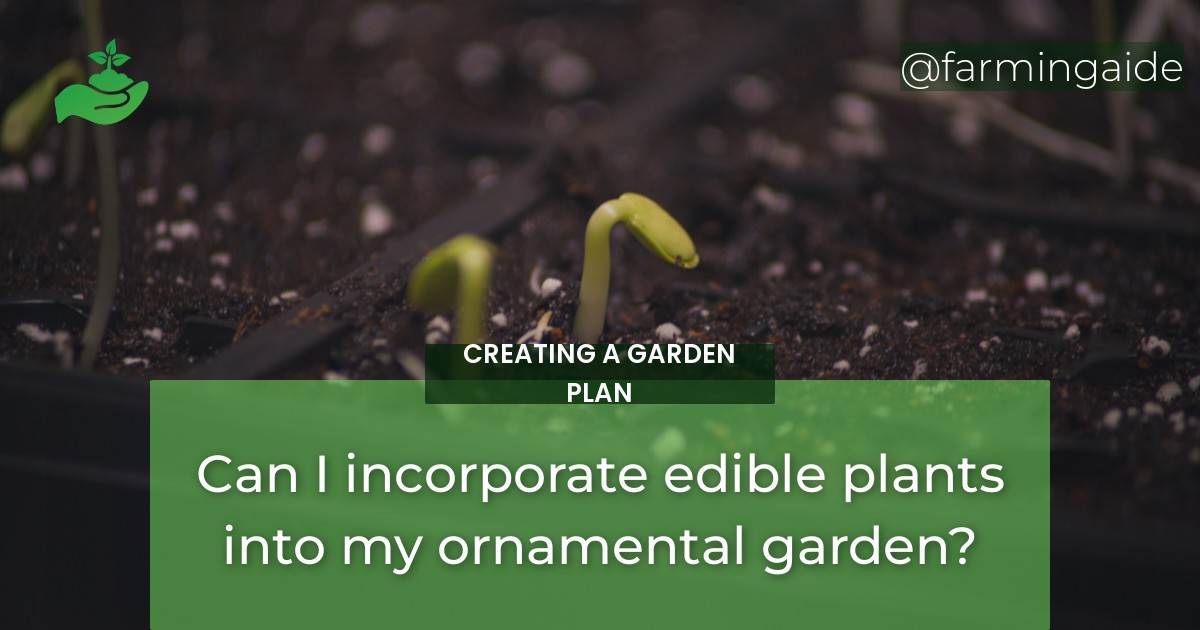Yes, you can definitely incorporate edible plants into your ornamental garden. In fact, combining edible and ornamental plants can create a beautiful and functional outdoor space that is both appealing to the eye and the taste buds.
Benefits of Incorporating Edible Plants in Your Ornamental Garden
Adds Functionality to Your Outdoor Space
When you incorporate edible plants into your garden, you are adding functionality to your outdoor space. Edible plants not only provide you with fresh produce, but they also attract beneficial insects and pollinators to your garden, helping to maintain a healthy ecosystem.
Brings a Sense of Satisfaction
Creating an edible garden can also bring a sense of satisfaction and joy. Knowing that you are growing your own food and that it is free from harmful pesticides and chemicals can give you a great sense of accomplishment.
Promotes Sustainability
When you grow your own food, you are also promoting sustainability. You are reducing your carbon footprint by reducing the distance your food travels from farm to table, which in turn reduces the amount of greenhouse gases released into the atmosphere.
Enhances the Aesthetic Value of Your Garden
Finally, incorporating edible plants into your ornamental garden can enhance the aesthetic value of your space. Many edible plants have beautiful flowers and foliage that can add color and texture to your garden.
Tips for Combining Ornamental and Edible Plants in Garden Design
Incorporate Edible Borders
One way to combine ornamental and edible plants is to create an edible border around your garden. This could include herbs such as thyme or lavender that have beautiful flowers and foliage.
Create a Herb Spiral
A herb spiral is another way to combine ornamental and edible plants. This is a spiral-shaped garden bed that is perfect for growing herbs such as cilantro, basil, and parsley.
Add Fruit Trees
Fruit trees can also be incorporated into your ornamental garden. Many fruit trees have beautiful flowers in the spring and colorful foliage in the fall.
Use Edible Plants as Filler Plants
Edible plants can also be used as filler plants in your garden design. For example, lettuce or kale can be planted between flowers to provide both beauty and food.
Combine Plants with Similar Growing Needs
When combining ornamental and edible plants, it is important to choose plants with similar growing needs. This will ensure that all of your plants thrive in the same environment.
Use Edible Plants as Accents
Edible plants can also be used as accents in your garden. For example, a pot of strawberries on a patio table not only looks beautiful but provides a tasty snack.
Integrate Edible Plants into Containers
Finally, edible plants can be integrated into containers. This is a great option if you have limited space or want to create a mobile garden.
ALSO READ
Considerations When Planning an Edible and Ornamental Garden
Climate and Soil Conditions
One thing to consider when planning an edible and ornamental garden is the climate and soil conditions in your area. Not all plants will thrive in all climates, so it is important to choose plants that are well-suited for your region.
Sunlight Exposure
Another consideration is the amount of sunlight exposure your garden gets. Some plants require full sun, while others prefer shade.
Plant Selection
When selecting plants for your garden, it is important to choose plants that are both ornamental and edible. There are many varieties of fruits, vegetables, and herbs that have beautiful flowers or foliage.
Maintenance Requirements
Finally, it is important to consider the maintenance requirements of your plants. Some plants require regular watering or fertilizing, while others can be left to grow on their own.
Will Edible Plants Benefit from the Same Fertilizers Used for Ornamental Plants?
Yes, edible plants can benefit from the same fertilizers used for ornamental plants when it comes to boosting flowering and fruiting. A balanced fertilizer rich in nutrients like nitrogen, phosphorus, and potassium can help promote healthy growth and bountiful harvests for both edible and ornamental plants alike.
Conclusion
Combining edible and ornamental plants can create a beautiful and functional outdoor space. By following these tips and considerations, you can create a garden that not only provides fresh produce but also enhances the aesthetic value of your home.
RELATED ARTICLES:


